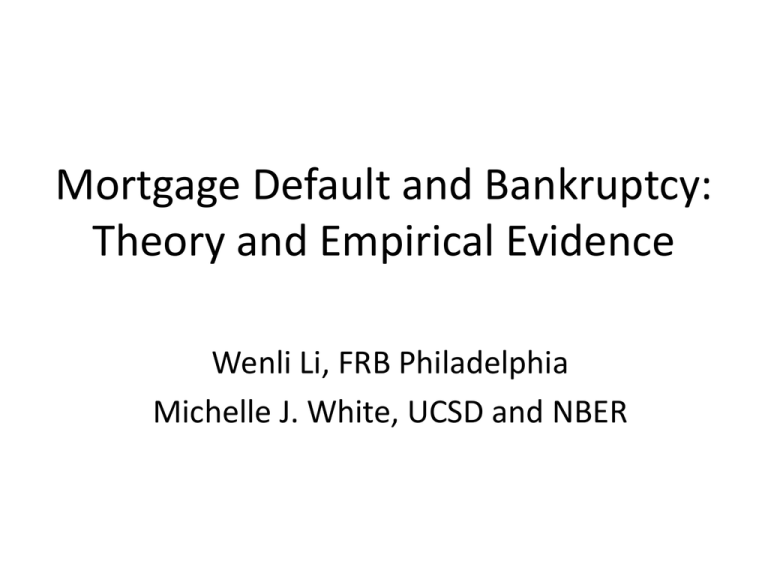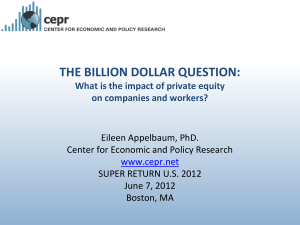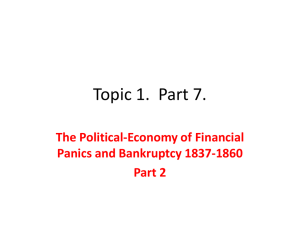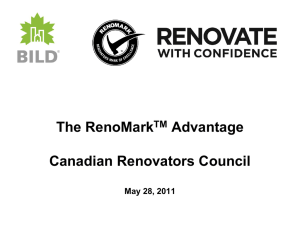
Mortgage Default and Bankruptcy:
Theory and Empirical Evidence
Wenli Li, FRB Philadelphia
Michelle J. White, UCSD and NBER
What we do:
• Examine the interaction of homeowners’ decisions to
default on their mortgages and file for bankruptcy.
• We test:
– Whether homeowners are more likely to default versus file
for bankruptcy when they gain financially from either, and
– Whether homeowners are more likely to default versus file
for bankruptcy when they are liquidity-constrained.
• We use new data that combines information on
mortgage debt and other types of debt.
– Previously, the literatures on mortgage default and
bankruptcy were separate because of lack of combined
data.
How are mortgage default and
bankruptcy decisions related?
• Bankruptcy helps homeowners avoid mortgage
default/keep their homes by discharging unsecured debt.
• Bankruptcy helps homeowners keep their homes by
delaying foreclosure and allows homeowners to repay
mortgage arrears over five years.
• But bankruptcy helps homeowners with high income or
high assets less, since they must use repay from future
income and assets.
• Default helps homeowners preserve access to credit card
loans—some choose default/avoid bankruptcy.
• Bankruptcy helps homeowners give up their homes by
discharging deficiency judgments.
Homeowners’ predicted mortgage default
and bankruptcy decisions
Notes:
• Diagram is separately calculated for each homeowner.
• As shown it assumes that bankruptcy reform is in effect (means
test), mortgage debt is fixed, and unsecured debt is fixed and high.
• Homeowners are predicted to default and file for bankruptcy only
when it is in their financial interest.
– D/B predicted when house value is low and income is low. (House
value is low enough that the cost of renting < cost of owning.)
– D/NB predicted when V is low and Y is high.
– ND/B predicted when V is higher and Y is high. (Here the income
boundary between B and NB shifts to the right because of
homeowners’ gains from filing for bankruptcy.)
– ND/NB applies when V and Y are both high and when V is very high
and Y is low. (Best not to default because must repay unsec debt from
sale proceeds of the house.)
Same, but some homeowners default due to
liquidity constraints
0
100
200
300
400
500
Figure 3. Predicted Probability to Default and File for Bankruptcy
0
50
income (thousands)
D/B
D/NB
ND/B
ND/NB
See the text for the value of the other variables we set for the hypothetic household
100
Notes:
• Now some additional homeowners default
even when it is against their financial interest
b/c V is high. They default because of liquidity
constraints.
Data:
We merge three datasets:
–
LPS: large sample of mortgages with
information from the mortgage application, plus
monthly updates on payment and bankruptcy.
– Equifax: sample of individuals with information
about all types of debt, plus quarterly updates on
payment, credit scores, debt-to-income ratio.
– HMDA: use it to merge LPS and Equifax based
on date/location/principal of mortgage.
Final dataset:
• All mortgages originated 2004-2006.
• They are followed quarterly until the mortgage is paid off
or transferred, the homeowner defaults or files for
bankruptcy, or at the end of 2009.
• Currently, we include only prime, fixed rate mortgages.
• Each quarter, we also have:
– Amount owed and payment record for second mortgages, credit
card debts, student loans, auto loans, and installment loans.
(Half of each debt if homeowner married.)
– Updated credit score and debt-to-income ratio.
– Income at origination and homeowner’s age, sex, marital status.
Specification:
• We estimate a multi-probit model explaining:
–
–
–
–
Default/no bankruptcy (aD/NB).
No default/bankruptcy (aND/B).
Relative to no default/no bankruptcy (aND/NB).
We drop simultaneous default/bankruptcy because
it’s very rare (aD/B).
• Main variables of interest are the predicted
decision variables D/NB, ND/B, D/B.
• Control variables, quarter and state dummies.
• Errors clustered by mortgage.
Predicted signs:
D/NB actual
ND/B actual
D/NB predicted
Own effect (+)
Cross effect (-)
ND/B predicted
Cross effect (-)
Own effect (+)
Sequence effect
(+)
Sequence effect
(-)
D/B predicted
Summary statistics (quarterly)
D/NB
Predicted
.034
Actual
.0049
ND/B
.0015
.0010
D/B
.026
.0003
ND/NB
.939
.994
Results w/o liquidity constraint:
(% change when prediction changes)
D/NB actual ND/B actual
D/NB predicted
ND/B predicted
D/B predicted
38%***
(own effect)
-38%***
(cross effect)
50%***
(sequence eff.)
-60%***
(cross effect)
42%*
(own effect)
-36%**
(sequence eff.)
Add liquidity constraint:
• Rerun the model with an additional dummy
variable for homeowners who are liquidityconstrained—combined debt payments are
more than 50% of income.
• % of observations that are liquidityconstrained?
• Everything else remains the same.
Results with liquidity constraint:
D/NB actual ND/B actual
D/NB predicted
ND/B predicted
D/B predicted
47%***
(own effect)
-54%***
(cross effect)
4%***
(sequence eff.)
-52%***
(cross effect)
99%***
(own effect)
-57%***
(sequence eff.)
Conclusions:
• Homeowners’ mortgage default and
bankruptcy decisions respond strongly to
financial benefit. are related.
• The two decisions are related—homeowners
are more likely to file for bankruptcy.
• Liquidity constraints make homeowners
more likely to do both.
Future work:
• Examine subprime mortgages and adjustable
rate mortgages.
• Compare results when default and bankruptcy
decisions are independent.








